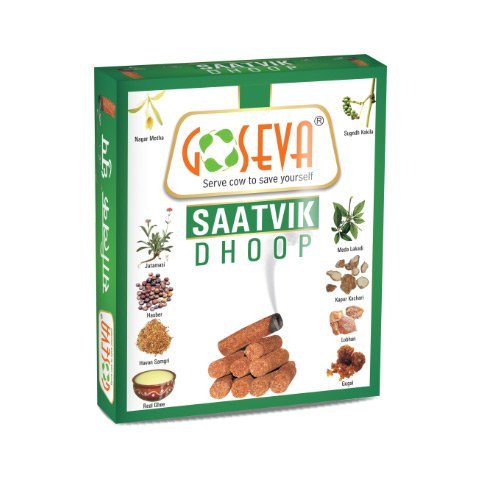The Sacred Art of Dhoop: Unlocking the Power of Incense in Indian Culture
Dhoop, also known as Agarbatti, has its roots in ancient India where it was used extensively in religious and spiritual ceremonies. The word "Dhoop" is derived from the Sanskrit term "Dhupa," meaning "to burn" or "to offer."

In the realm of Indian spirituality, there exists a subtle yet profound practice that has been woven into the fabric of our daily lives for centuries. This ancient art is that of Dhoop, a form of incense that transcends mere fragrance to become a potent tool for spiritual growth, emotional balance, and environmental purification. In this blog, we will delve into the world of Dhoop, exploring its various forms, benefits, and the sacred rituals that surround it.
The Origins of Dhoop
Dhoop, also known as Agarbatti, has its roots in ancient India where it was used extensively in religious and spiritual ceremonies. The word "Dhoop" is derived from the Sanskrit term "Dhupa," meaning "to burn" or "to offer." This sacred practice has been passed down through generations, with each region and community developing its unique variations and traditions.
The Different Forms of Dhoop
Dhoop comes in various forms, each with its distinct characteristics and benefits. Some of the most common types include:
- Dhoop Sticks: These dhoop stick are the most widely used form of Dhoop, made from a mixture of natural ingredients such as herbs, spices, and resins. They are easy to use and can be lit with a matchstick, releasing a fragrant smoke that purifies the air and creates a calming effect.
- Dhoop Batti: This traditional form of dhoop batti is made by hand, using a mixture of natural ingredients and a binding agent. It is believed to have a stronger fragrance than Dhoop Sticks and is often used in larger spaces such as temples and meditation rooms.
- Satvik Dhoop: This type of satvik dhoop is made from natural ingredients that are considered sacred in Hinduism, such as sandalwood and camphor. It is believed to have a purifying effect on the mind, body, and soul.
- Guggal Dhoop: This form of guggal dhoop is made from the resin of the Guggal tree, which is known for its medicinal properties. It is believed to have a calming effect on the mind and body.
- Chandan Dhoop: This type of chandan dhoop is made from the bark of the Sandalwood tree, which is considered sacred in Hinduism. It is believed to have a soothing effect on the mind and body.
- Kapur Dhoop: This form of kapur dhoop is made from the resin of the Kapur tree, which is known for its antiseptic and anti-inflammatory properties. It is believed to have a purifying effect on the air and can be used to ward off negative energies.
The Benefits of Dhoop
Dhoop is not just a pleasant fragrance; it has numerous benefits that can be incorporated into our daily lives. Some of the key benefits include:
- Air Purification: Dhoop is known to purify the air by removing impurities and negative energies. This can be especially beneficial in spaces with poor ventilation or high levels of pollution.
- Mental Clarity: The fragrant smoke released by Dhoop is believed to have a calming effect on the mind, promoting mental clarity and focus.
- Emotional Balance: Dhoop is believed to have a balancing effect on the emotions, helping to reduce stress, anxiety, and depression.
- Spiritual Growth: Dhoop is an integral part of many spiritual practices, including meditation, yoga, and prayer. It is believed to help create a sacred space that fosters spiritual growth and connection with the divine.
Incorporating Dhoop into Your Daily Life
Incorporating Dhoop into your daily life can be as simple as lighting a stick or cone before meditation or yoga practice. You can also use Dhoop to create a peaceful atmosphere in your home or office, promoting relaxation and focus. Here are some tips to get you started:
- Choose the Right Type: Select a type of Dhoop that resonates with your personal preferences and spiritual practices.
- Use High-Quality Ingredients: Opt for Dhoop made from high-quality, natural ingredients that are free from artificial additives and chemicals.
- Light with Intention: Light your Dhoop with intention, focusing on the benefits you wish to receive and the positive energies you want to attract.
- Respect the Tradition: Respect the traditional practices and rituals surrounding Dhoop, and use it as a tool for spiritual growth and self-reflection.
Conclusion
Dhoop sticks have evolved significantly over the years, catering to diverse needs and preferences. From the strong, sweet fragrance of guggal dhoop to the soothing, woody scent of chandan dhoop, each type of dhoop offers a unique experience. Whether used for spiritual practices, meditation, or festive celebrations, dhoop sticks have become an essential part of our daily lives. By understanding the origins, types, and benefits of dhoop, we can harness its power to create a more harmonious and peaceful world around us.
What's Your Reaction?










![Blog Submission Sites 2024 [High DA]](https://blognow.co.in/uploads/images/202306/image_100x75_6494a03eaff5e.jpg)
![Article Submission Sites 2023 [High DA & PA]](https://blognow.co.in/uploads/images/202307/image_100x75_64c4181f17036.jpg)
![Classified Submission Sites 2023 [High DA & PR]](https://blognow.co.in/uploads/images/202306/image_100x75_649dcd5260808.jpg)




![Article Submission Sites 2023 [High DA & PA]](https://blognow.co.in/uploads/images/202307/image_750x415_64c4181f08ed5.jpg)
![Classified Submission Sites 2023 [High DA & PR]](https://blognow.co.in/uploads/images/202306/image_750x415_649dcd5247eeb.jpg)
![Blog Submission Sites 2024 [High DA]](https://blognow.co.in/uploads/images/202306/image_750x415_6494a03e96bfa.jpg)